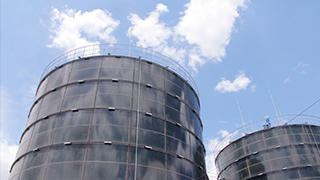China's sewage treatment casualties frequently occur. In the final analysis, they are caused due to weak safety awareness and the failure to implement the safety training and measures in the end. Many accidents that can be avoided are common in sewage treatment plants. This article summarized 47 accidents of sewage treatment plants in the past ten years, summarized characteristics of sewage treatment accidents through comprehensive analysis and discussion, and proposed suggestions for reducing accidents in sewage treatment plants.
Frequent occurring of sewage treatment plant accidents
Statistical analysis of accidents in sewage treatment plants
Through the analysis and research on the actual 47 accident cases of sewage treatment plants, it mainly summarized the time of the accident, the number of casualties, the type characteristics of the accident, and finally the characteristics and statistics and analysis were performed on characteristics and laws of the accident, thereby providing the data theory with reference value for early prevention of sewage treatment plant accidents.


|
图1:47起污水处理厂事故月度分析 |
Fig. 1: Monthly analysis of 47 sewage treatment plant accidents |
|
事故起数 |
Number of accidents |
|
死亡人数 |
Number of deaths |
|
受伤人数 |
Number of injuries |
|
1月 |
January |
|
2月 |
February |
|
3月 |
March |
|
4月 |
April |
|
5月 |
May |
|
6月 |
June |
|
7月 |
July |
|
8月 |
August |
|
9月 |
September |
|
10月 |
October |
|
11月 |
November |
|
12月 |
December |
In the 47 sewage plant accidents, there were 16 ordinary accidents, accounting for 40% of the total accidents, and 24 large accidents, accounting for 60% of the total accidents. Therefore, the accidents of sewage treatment plants in China are mainly ordinary accidents and large accidents, and the proportion of large accidents is obviously higher, but it can be seen that there are fewer major and particularly serious accidents.
Type of accident and cause of the accident
By classifying and summarizing 47 sewage plant accidents cases collected, we can see that the accident cause ranking first is poisoning and suffocation, and accidents caused thereby account for 71% of the total accidents. The second place is the structure collapse, and the third place is drowning. In addition, there are water inrush, electric shock, explosion accidents, etc. It can be seen from the analysis conclusion that the main type of accidents in sewage treatment plants is poisoning and suffocation accidents, which are also the focus and difficulty in changing the safe living state of sewage treatment plants.

|
图2:47起污水处理厂事故类型 |
Fig. 2: Type of sewage treatment plant accidents |
|
中毒窒息 |
Poisoning and suffocation |
|
坍塌 |
Collapse |
|
淹溺 |
Drowning |
|
透水 |
Water inrush |
|
触电 |
Electric shock |
|
爆炸 |
Explode |
In the analysis and research, the substances of poisoning suffocation were counted and classified. The results show that hydrogen sulfide mainly causes poisoning accidents, and biogas mainly causes suffocation accidents.

|
图3:中毒窒息事故物质分析 |
Fig. 3: Material analysis of poisoning and suffocation accidents |
|
沼气 |
Biogas |
|
硫化氢 |
Hydrogen sulfide |
Through the analysis and statistics of the poisoning and suffocation accidents in the total accidents, we can see that no checking of the failure of workers’ personal protective articles according to the regulations and no use of personal protective articles are the main causes of accident casualties. Defects of the devices run by the sewage treatment plant are also one of causes of casualties in an accident. Poor ventilation, incorrect operation, risky entry into dangerous places, improper storage of articles and the like also cause the poisoning and suffocation accidents. In view of the above, in order to reduce the occurrence of casualties caused by poisoning and suffocation, it is a key means to ensure that workers’ protective articles are effective and are used correctly.

|
图4:中毒窒息事故原因分析 |
Fig. 4: Analysis of the causes of poisoning and Suffocation accidents |
|
不明 |
Unknown reasons |
|
物体存放不当 |
Improper storage of articles |
|
冒险进入危险场所 |
Risky entry into dangerous places |
|
操作错误 |
Incorrect operation |
|
通风不良 |
Poor ventilation |
|
设备缺陷 |
Device defects |
|
个人防护用品失效或者未使用 |
Failure or no use of personal protective articles |
The occurrence of accidents is always caused by a combination of various reasons. In the 40 sewage treatment plant accidents we counted above, there were 18 accidents that caused more casualties due to blind rescue without rescue conditions and common sense in rescue, accounting for 43% of the total accidents. There were 10 accidents caused by poor ventilation in the working environment, accounting for 25.4% of the total accidents. Therefore, it can be seen that if poisoning and suffocation accidents occur, the standard and scientific rescue process is an effective way to reduce the accidents of the sewage treatment plants.

|
图5:47起污水处理厂事故发生位置 |
Fig. 5: Locations of 47 sewage treatment plant accidents |
|
检查井 |
Inspection well |
|
污水池 |
Sewage pool |
|
管网 |
Pipe network |
|
沟槽 |
Trench |
|
污泥池 |
Sludge tank |
|
污泥脱水机房 |
Sludge dehydration machine room |
|
进水口格栅间 |
Water inlet grill |
|
污水处理设备 |
Sewage treatment device |
|
雨水井 |
Catch basin |
|
进水井 |
Inlet well |
|
沼气池 |
Biogas digester |
|
不明 |
Unclear reasons |
After analysis and research on 47 sewage treatment plant accidents, it can be seen that the main locations of accidents are inspection wells, sewage pools, pipe networks, trenches, etc.
Analysis results of sewage treatment plant accidents
Through analysis and discussion on the above-mentioned 47 accidents of sewage treatment plants in China, we concluded: seasonality is a major law in the occurrence of accidents in sewage treatment plants; from May to September in most of regions in China, the temperature is high, and the accident rate of sewage treatment plants is high. In contrast, from October to April of the next year, the temperature in the whole country is reduced, and the accident rate of sewage treatment plants is low.
Suggestion on Special operation safety of sewage treatment plants
In order to reduce and prevent accidents in sewage treatment plants, reduce unnecessary casualties, and ensure the safe operation of sewage treatment plants, it is suggested that sewage treatment plants:
1. Strengthen the safety education for staff, improve the professional quality of the staff, and improve the safety awareness of the staff.
2. Execute the ticket system of the responsible person, strengthen the management of restricted and flame operation tickets, implement the responsibility system, formulate the guardian assessment system, ensure security management of taking a job with a certificate and having no right for guardian if there is no certificate.
3. Strengthen the inspection, storage, maintenance and the like of personal protective articles, and ensure that the personal protective articles of the staff have good performance in specific work operations to facilitate use, and also learn to use some safety devices and detectors for harmful gases, etc.
4. The restricted space of the sewage treatment plant must be operated with the certificate, and it must be analyzed and monitored to be qualified before the operator enters. The operator must wear a flammable gas and air alarm to monitor the working environment. If necessary, ventilation operation is performed, the guardian must be responsible for guardianship. If it is found that the toxic and harmful gas does not meet the work requirements, it should immediately stop working and withdraw the operator to avoid the accident.
5. Learn the necessary first aid and emergency rescue skills. A considerable part of the reasons of the accident occurring is that the operator performs blind rescue without professional rescue knowledge, thereby causing unnecessary casualties, so the operator also needs to learn the necessary first aid methods to avoid the greater casualties caused by blind rescues in the event of an accident.
Source: Journal of Safety Science and Technology Author: Liu Ning







